

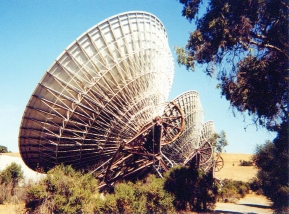 |
Friends
of the
Bracewell Observatory Association Opening
up the World of
|
Updated October 2nd, 2011
Volunteer
Team Signups To Date: 71
Donor
Information
View
the Rescue Petition
Construction
Photo Slideshow (Circa 1967)
August 13th, 2007
To all Bracewell Observatory rescue supporters,
I am saddened to tell you that Professor Ronald Bracewell passed away yesterday at his home.
He will be greatly missed by all of us.
Ron will be remembered for his warmth, sense of humor, and gift for
sparking scientific curiosity in his friends and students, as well as his
brilliant and inspirational pioneering work in Radio Astronomy and CT-scan
imaging.
Bob Lash, M.D.
President
Friends of the Bracewell Observatory Association
Email: bob@bambi.net
March 10th, 2006
To all Bracewell Observatory rescue supporters,
I just received word that in spite of our best efforts, and in spite of an expected August 4th, 2006 State hearing to rule on its historical status, Stanford began demolition of the five 60 foot dishes of the Bracewell Observatory today.
Why Stanford has been so determined to demolish the observatory, for no compelling reason, remains an enigma.
We're not giving up the ship!
We will continue to pursue our goal of opening up the world of radio astronomy to students and the community.
General Dynamics here in Mountain View (about 15 minutes south of the Bracewell Observatory) is about to decommission a 45 foot dish (see photo below, click here for larger image)
which they said they would be willing to make available at no charge for educational use. As you can see from the photo, this dish could be converted into an exciting public radio telescope, and provide access for amateur projects of all kinds, ranging from SETI to AMSAT.
We will also continue our effort to preserve and present the history and scientific contributions made by Professor Bracewell and his colleagues at the Bracewell Observatory.
I would like to express my gratitude to all of you, including our many enthusiastic supporters among Stanford faculty, students, and alumni, our 71 dedicated volunteers, local residents, members of the Society of Amateur Radio Astronomers, the SETI League, the Society for Amateur Scientists, and people around the world who made every effort to save the Observatory. You are to be commended.
I will update you as I know more.
Best wishes,
Bob Lash, M.D.
President
Friends of the Bracewell Observatory Association
Email: bob@bambi.net
An
Open Letter to the President of Stanford University,
as
published in the Palo Alto Daily News on February 24th, 2006
Help
Us open up the World of Radio Astronomy
to
Students and the Community!
The five 60-foot dish antennas built by Professor Ronald Bracewell at Stanford are at risk of imminent demolition. Our effort to rescue the observatory is continuing.
We propose to save, restore, and operate this site to achieve the following goals:
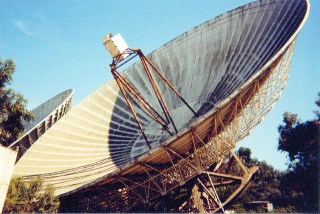
View of One of the Five 60 Foot Dish
Antennas
|
Background
Over a year ago the Stanford Fire Marshall found dry brush at the observatory and called for its cleanup. He also indicated that the dishes themselves were not a fire hazard, being of metal construction. The Dean of the School of Engineering called not only for brush removal, but the demolition of the whole telescope. Stanford's School of Engineering agreed that if our supporters paid them $20,000, they would allow us until June 30th, 2005 to develop and submit a final proposal for the site. Our supporters provided the $20,000, and we presented a proposal on time. The the funds were to cover the added cost of completing the demolition work at a later date. Should a proposal be accepted, these funds are to be made available in support of the site. We developed a collaborative proposal in conjunction with the Director of Stanford's Space, Telecommunications, and Radio Science Laboratory (STAR Lab), the Director of Stanford's Space Systems Development Laboratory (SSDL), and a Professor teaching antenna technology (EE144/245) to synergistically combine Stanford academic and research use with our planned activities. We proposed to support the use of one or more of the dishes to track scientific satellites carrying Stanford-built instrumentation as well as student-built microsatellites, in addition to hands-on student lab use. We presented this to the Dean, who rejected it, indicating that more professors would need to be found to use the site, even though we were originally told that only one tenure-line professor would be necessary for the proposal. We then obtained signups from several more professors who would use the site with our support, but it was again rejected. Following this, professors in the Stanford Astronomy Program created their own proposal to put the radio telescope back into operation, with our support, as a teaching observatory for use in conjunction with Stanford's undergraduate astronomy courses. The proposal was cleared by the Department of Physics and then submitted to the office of the Dean of Humanities and Sciences where it rose to the level of the Provost. Their request was denied for reasons not disclosed to us. Two Stanford student clubs requested the use of the site with our support (The Stanford Astronomical Society, and the Stanford Amateur Radio Club), but their requests were denied with no explanation. We then submitted a new proposal directly to the President of Stanford. This new approach is based on our directly leasing the site, establishing an endowment to cover operating costs in perpetuity, and providing access for faculty and students. We wanted to learn what concerns he might have, so we could have an opportunity to address them. Instead, a series of our letters went unanswered, and we we were finally informed by his assistant that he has denied our request to meet. NASA's Jet Propulsion Laboratory (JPL) learned about the imminent demolition, and approached Stanford's Office of Science Outreach to explore their own proposal. A number of Stanford professors wrote to JPL indicating they would like to participate. NASA's vision was to share the dishes equally among four groups at "minimal or no cost" to Stanford: 1. JPL outreach program, enabling high-school student access to this radio-astronomy capability, from schools in the US and overseas. 2. Stanford outreach to amateur radio-astronomers, sponsored by the Friends of the Bracewell Observatory Association (FBOA). 3. Stanford faculty and students, for projects on mechanical systems, wide-band low-noise amplifiers, RF and IF circuits, and radio-astronomy research. 4. JPL DSN Array project, for testing of arraying and signal processing, including long-duration, 24x7 tracking of NASA's deep space missions. Our efforts to arrive at a win-win solution continues. |
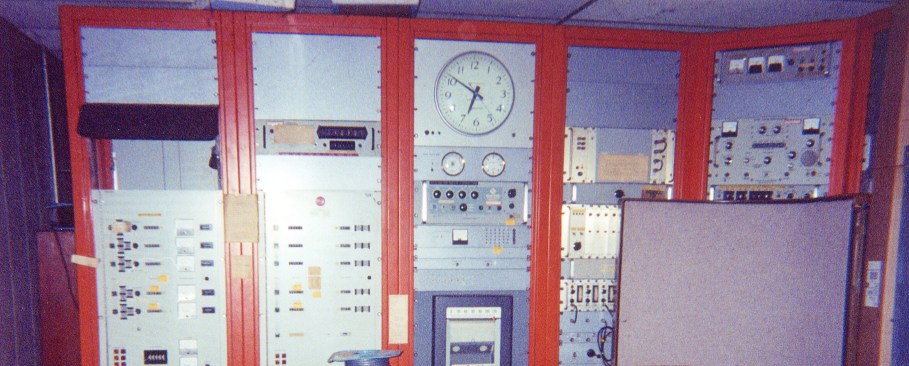 |
The Stanford Radio Astronomy Observatory
(historically known as "Heliopolis"), located at Stanford Field Site 515,
is where 11 years of daily microwave sun maps were produced and where a
radio telescope, in the form of a compound interferometer, first achieved
the angular resolution of the human eye (one arcminute). It was also here
that the first discovery was made revealing the direction of motion of
our solar system relative to the cosmic background.
The image reconstruction mathematical methods developed by Professor Bracewell for these radio telescope antennas were universally adopted into the algorithms of medical CT scanners, advancing the art of medical diagnosis around the world. |
|
|
If you are interested
in helping with this rescue effort, please contact:
Bob Lash
President
Friends of the Bracewell
Observatory Association
bob@bambi.net
Please include information about your background, interests, what areas you would like to help with (publicity, fundraising, dish mechanical restoration, feeds, receivers, building restoration, historical document preservation and scanning, mentoring, docent activities, you name it, etc.), your location, and your contact information.
Detailed technical information about the radio telescope system (in the form of "Glint Notes") is here. Rescue volunteer Chris Ridder is actively scanning in more Glint notes, and is maintaining a growing archive at http://www.cridder.com/bracewell (thank you Chris!).
Additional photos and documents regarding the site are here,
The Friends of the Bracewell Observatory
Association is a non-profit 501(c)(3) organization supported by Stanford
alumni, members of the Society of Amateur
Radio Astronomers (SARA), the Society
for Amateur Scientists (SAS), the SETI
League, and the community. If you or your organization would like to
join in this effort, please contact
Bob
Lash.
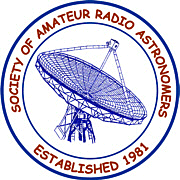 |
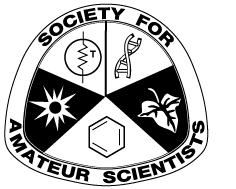 |
 |
![]()
Help spread the word! Copy the above graphic to your website, blog,
or server
and link it to the Friends of the Bracewell Observatory Association
at http://www.bambi.net/stanford_dishes/rescue.html .
(Special thanks to Steve at Binarywolf
for the graphic.)
| Free polls from Pollhost.com |
| POLL: Should Stanford halt the demolition of the Bracewell Observatory to allow NASA/JPL time to develop a final proposal with interested faculty? |
|
|